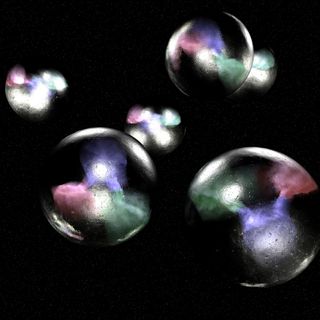Write4U
Valued Senior Member
The three fundamental non-physical elementals of the physical world, do in fact have relational values even tho they are technically not physical in essense.. The wave function is a non-physical guiding algorithm and has no physical existence in and of itself. Yet it governs the dynamics of physical motion.↑
Based on the Physical Properties of the Constituent Parts , which are Fundamentally , Physical . The Periodic Table is First a Physical based table of Real Physical Elements . It is not based on mathematics , at all , period .
What is wave function collapse? Is it a physical event?
So, a spread-out physical electron wave collapses down to a tiny physical particle? No, it doesn’t.In one view, a wave function is a piece of math, an equation. It’s not a physical thing. So, it can’t collapse in any physical sense. The collapse is metaphorical. This is one interpretation of quantum mechanics. It’s the interpretation taught in most university classes, the Copenhagen Interpretation. However, physicists have not settled on a particular interpretation. For more nuance, see the later section “Caveat—Other Interpretations of Quantum Mechanics.”
http://www.quantumphysicslady.org/what-is-wave-function-collapse-is-it-a-physical-event/#The electron collapses down to a tiny physical particle, all right. But, according to the in the Copenhagen Interpretation, there was never any physical electron wave. The waviness of the electron prior to detection was never physical in the sense that tables and chairs are physical. If there is a wavy electron, it’s no more physical than a mathematical expression.
Yet the wave function controls (shapes) the dynamical physical expressions. The Explicate (Bohm).
What Are Elementary Particles?
By Adam Mann May 07, 2019
(Image: © MichaelTaylor | Shutterstock)
Elementary particles are the smallest known building blocks of the universe. They are thought to have no internal structure, meaning that researchers think about them as zero-dimensional points that take up no space.
https://www.livescience.com/65427-fundamental-elementary-particles.html#Electrons are probably the most familiar elementary particles, but the Standard Model of physics, which describes the interactions of particles and almost all forces, recognizes 10 total elementary particles......more
Last edited:




